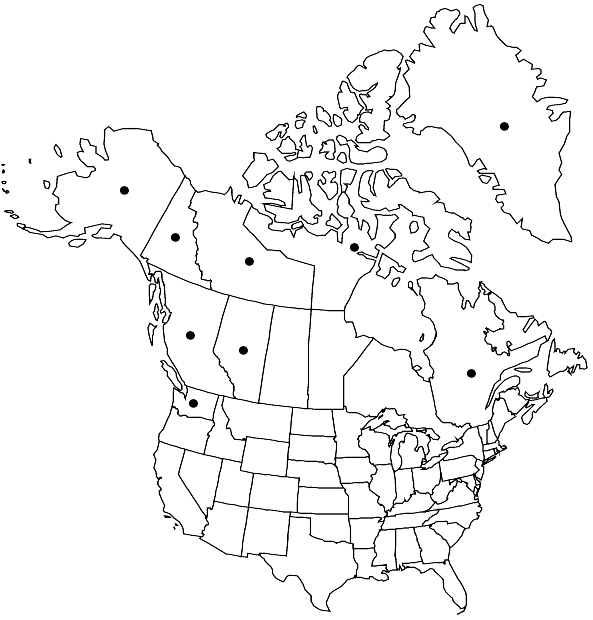Niphotrichum canescens subsp. latifolium
Gunneria 41: 123. 1983,.
Plants fairly gracile. Leaves ovatelanceolate, straight or occasionally weakly falcate, often less obtusely keeled distally, chlorophyllous at the apex; awns mostly subulate and flexuose, distinctly decurrent, moderately denticulate and spinulose towards the extreme apex.
Habitat: Dry to moist, exposed habitats, acidic or less often calciferous substrates, soil, humus, rock-debris and rocky ground, between boulders, talus slopes, cliffs and ledges various communities of polar tundra and tundra-like alpine heaths and barrens
Elevation: low to high elevations (0-2000 m)
Distribution

Greenland, Alta., B.C., N.W.T., Nunavut, Que., Yukon, Alaska, Wash., Europe (Jan Mayen), Europe (Spitsbergen), Europe (Fennoscandia), arctic and temperate Asia (Japan), arctic and temperate Asia (Sikkim), Atlantic Islands (Iceland)
Discussion
Subspecies latifolium is widely distributed from Alaska to Greenland. The ranges of both subspecies overlap in the Rocky Mountains of British Columbia and Washington, and there the differences between the taxa seem to be less pronounced. There are some problematic plants with narrower awns and more lanceolate leaves, but because they are robust and have falcate leaves, they are referred to subsp. canescens. The plants from the more northerly regions are easy to determine. They are slender and the leaves are ovate-lanceolate, less concave, mostly straight, and chlorophyllose at the apex. Consequently, the awns embrace only the small uppermost part of the leaf lamina and are long-decurrent. In the Arctic, subsp. latifolium is likely to be mistaken for N. panschii. The differences between these taxa are discussed under the next species.
Selected References
None.